- Location
- Wallingford, CT
So I picked up an ARID C30 & E24 on 4/27/15 and placed them in service on 4/29/15.
A little background on the systems that I am using the reactors on and also my reasoning as to why:
The C30 is going on a System in which I will call SystemA for future reference. SystemA has a 180g fowlr and a 102g Nem/Euphyllia tied into a 75g sump. This system is extremely high in nutrients due to the amount of fish and it's feeding requirements. Currently there are 37 total fish in both tanks, there were probably more at one point but at the present sizes of some of these guys, the system is probably max'd out biologically wise.
System is 8 years running and probably around the 3 year mark, my No3 & Po4 were out of control even with regular water changes. While GFO media was always in use and changed out weekly I decided to experiment with lanthanum chloride in early 2010 because my Po4 was always at the 2.75 ppm mark and I also put into service a sulfur denitrifier in an attempt to lower the No3 that was hovering the 200 ppm mark. While lanthanum chloride lowers Po4 extremely well, I did not like the side effects that I was experiencing and the sulfur reactor could not keep up with the No3 buildup so towards the end of 2010, I stopped the lanthanum chloride dosing and took down the sulfur reactor and started using bio-pellets. The bio-pellets took about 3 months to start lowering my No3 and fast forward 4.5 years to 2015, bio-pellets keep my No3 at 5 ppm consistently but does nada for my Po4 which has been 2.75 ppm or higher for the past 5 years. ( I did lower the Po4 to 1.62 ppm with a ton of GFO for 1 week prior to the ARID arrival)
While the Nems/Euphyllias have had no adverse effects and the fish were, well just fish I still wanted to lower the Po4 and switched to the all-in-one bio-pellets in 2014. After using the aio pellets for a year, I find that their claim of 10x higher removal of Po4 did not come true in my system.
I still wanted to lower the Po4 and switched to the all-in-one bio-pellets in 2014. After using the aio pellets for a year, I find that their claim of 10x higher removal of Po4 did not come true in my system.
So now I come to the decision of whether to invest in new technology (A.R.I.D) or continue the use of AIO pellets at a rate of $75 per 1000ml bag every 2 months (500ml depletion per month in pellet reactor) and have extraordinary results with No3 combined with little to no removal of Po4, ARID here I come :Up_to_som
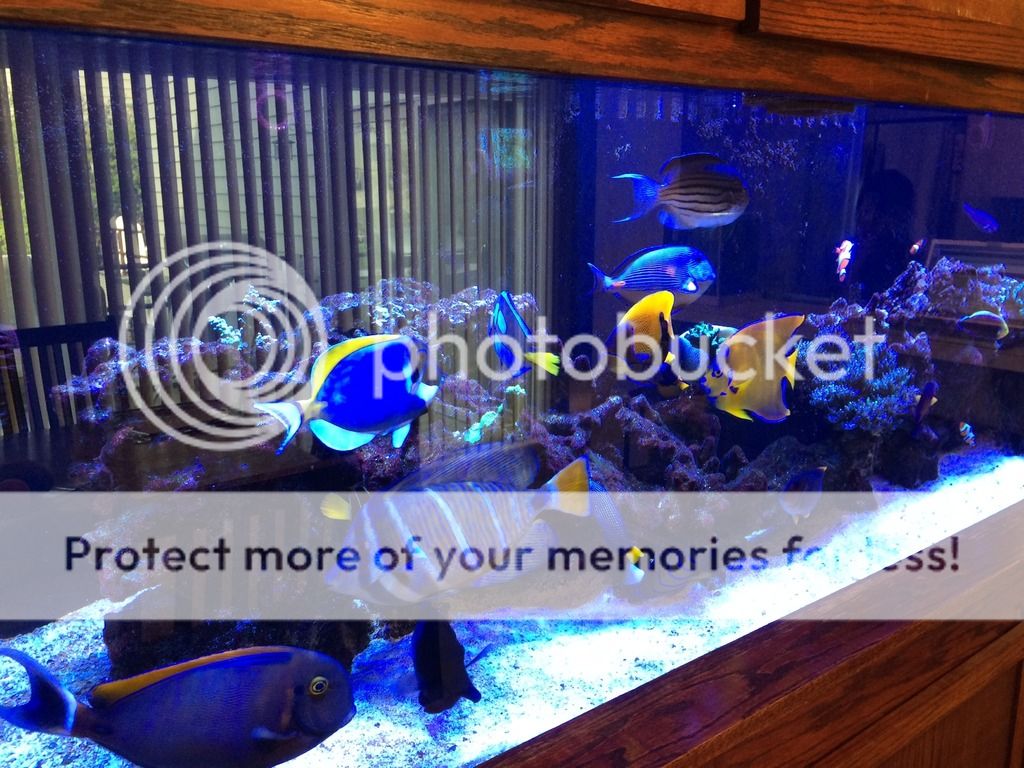
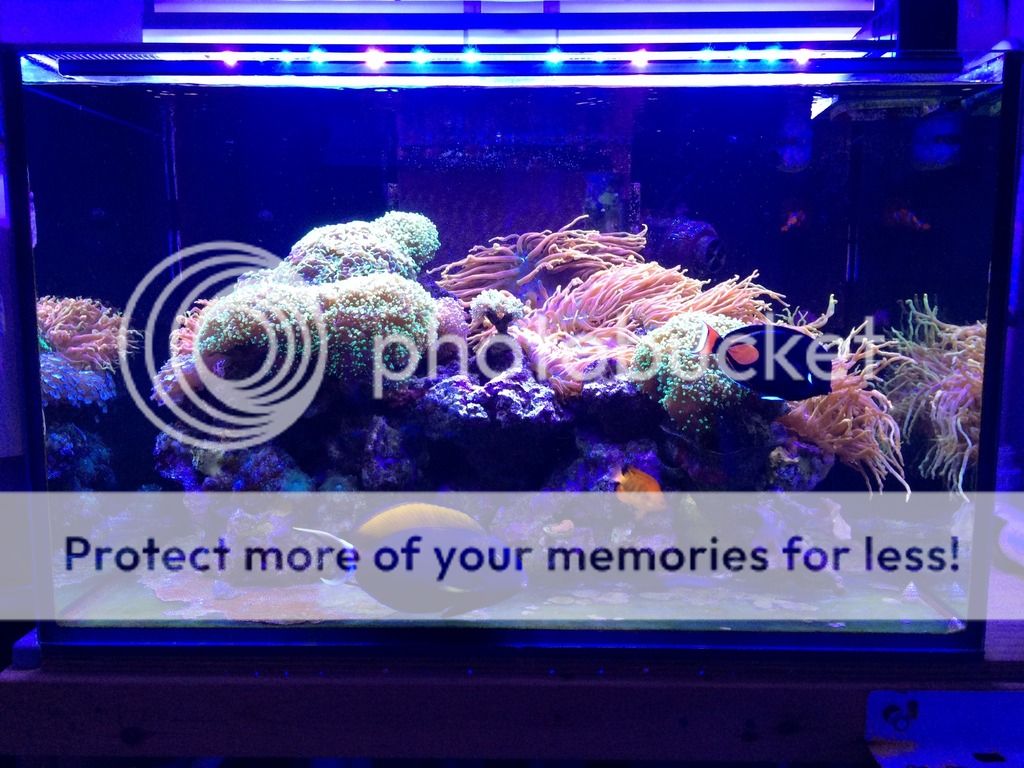
No3 & Po4 readings on day of C30 setup:
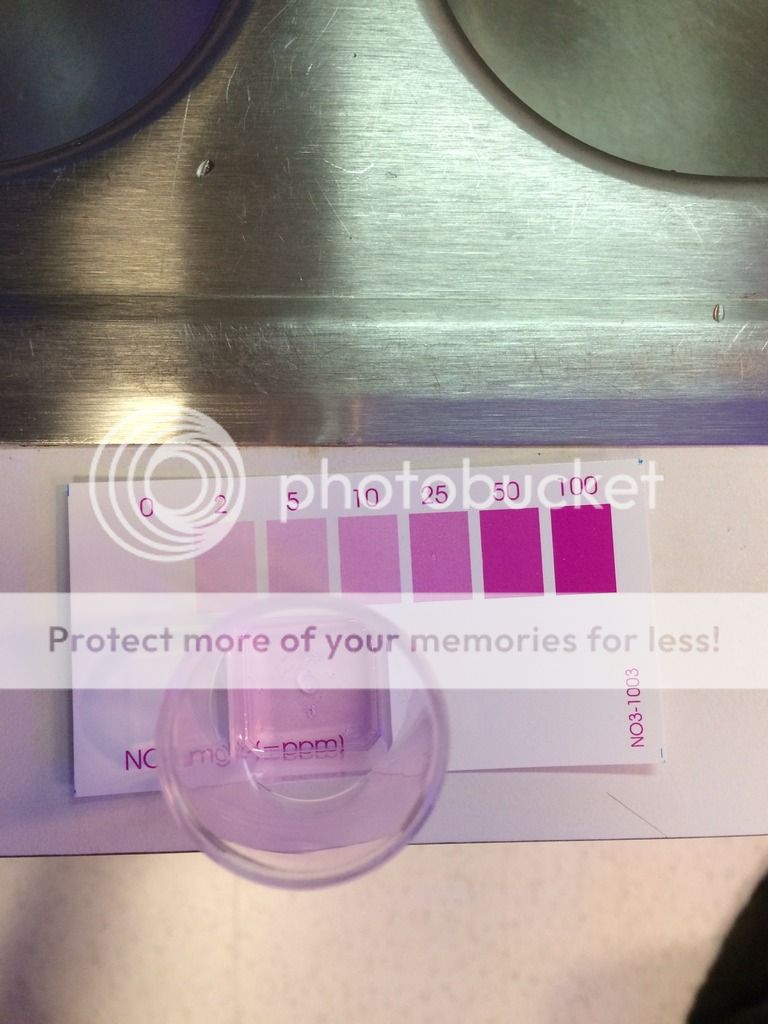
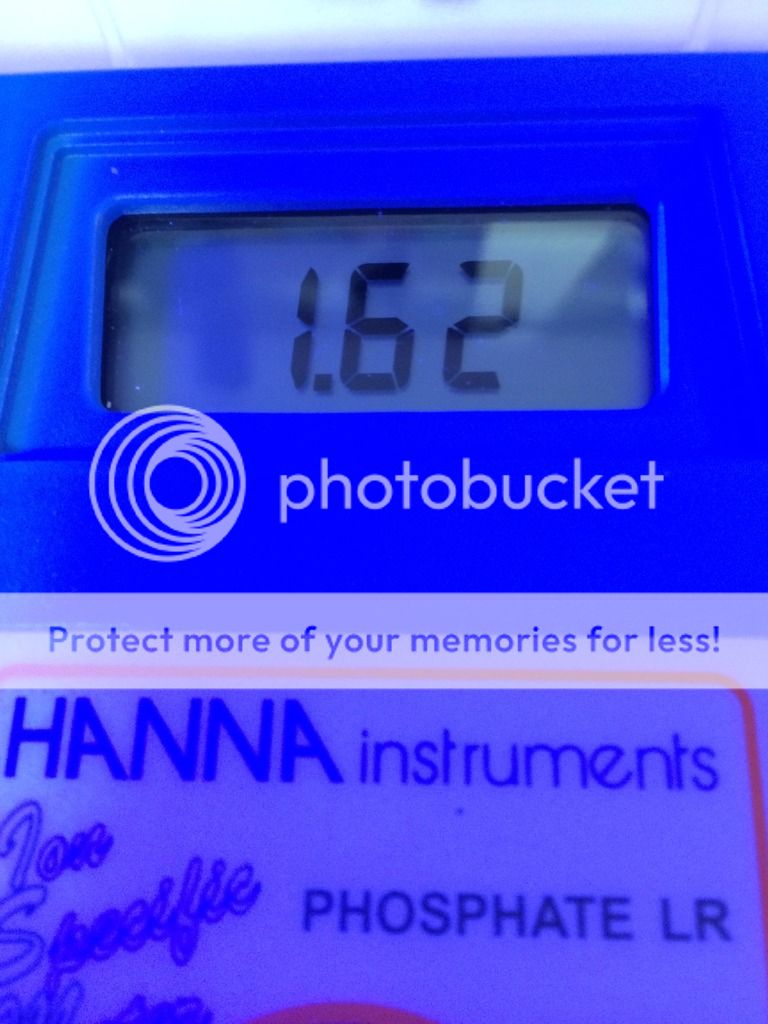
The E24 is going on a system that I will call SystemB for future reference. This system has a little better nutrient management but certainly not text book numbers.
This system is composed of a 120g and a 66g tied to a 30g sump with mainly SPS coral. The 120g has been running for a little over 7 years and the 66g was tied into the common sump probably around 5 years ago. Historically, the No3 and Po4 were always higher than what SPS keepers are comfortable with but again, with little maintenance time available due to my 200 mile daily work commute, it is what it is and to be honest, I grew SPS at this elevated level without problems for years contrary to a lot of naysayers :lol2:
System also has a sulfur reactor and GFO to manage N03 & P04. Here again comes the fish. As you can probably figure out, I like fish :fish: There are 31 fish in total between the 2 tanks and with nutrient management along with the heavy feedings I still consistently hover at 50 ppm in N03 and the P04 can be anywhere between 0.35 to 0.80 ppm dependent on how often I change out the GFO media.
In SystemA, constant consumable aio bio-pellets were a cost factor but with SystemB, consumable cost factor was not relevant. My reasoning for changing the nutrient management was to further lower the N03 & P04 that the sulfur denitrifier and GFO was not able to do for me.
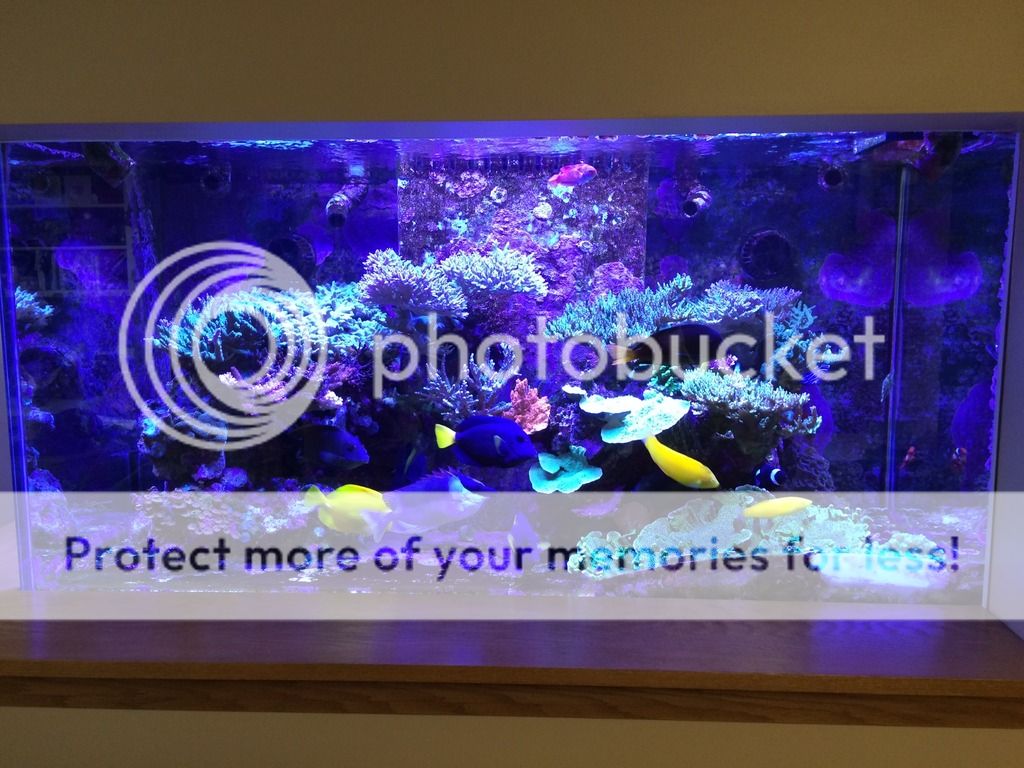
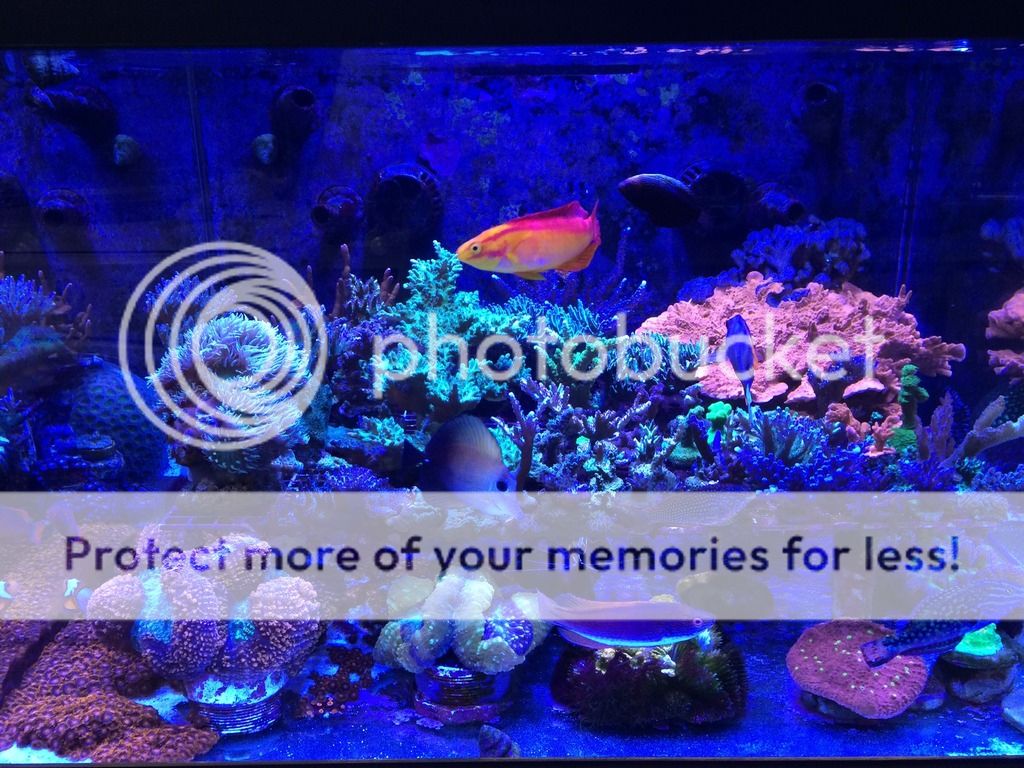
N03 & P04 readings on day of E24 setup:
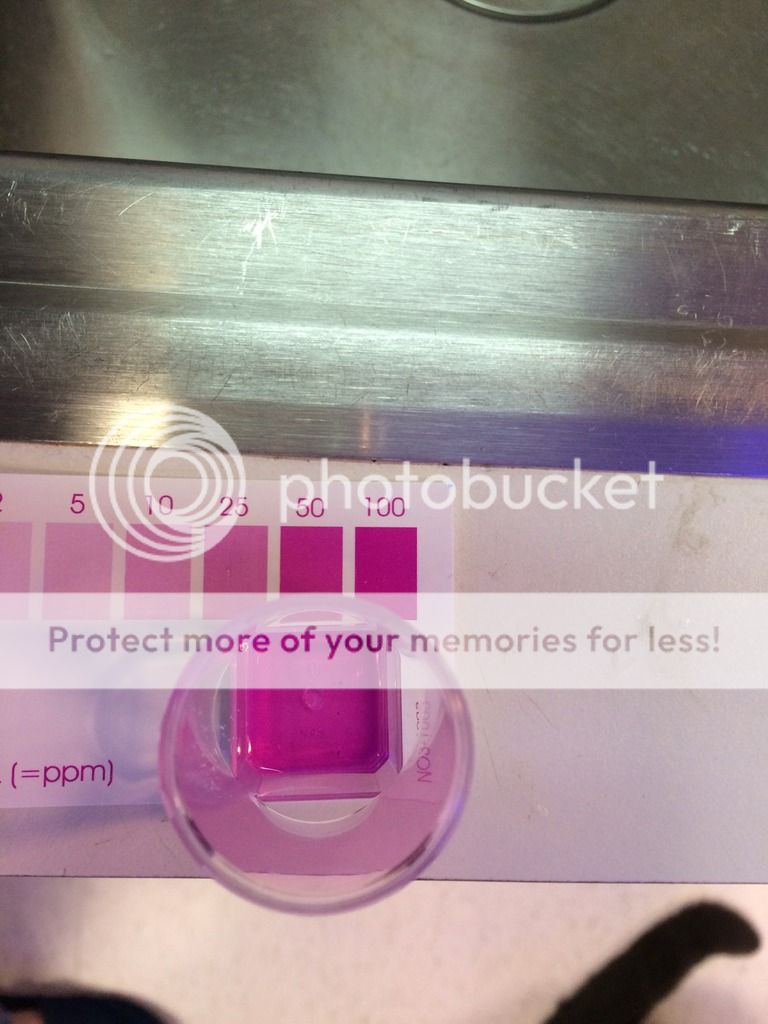

Here is the size comparisons between the E24 & C30

A little about what I can remember about the specs on these reactors:
C30 can handle up to 400g tank volume and recommended flow through the reactor is 500 gph. (I used a Marineland Utility 1800 pump rated at 475 gph)
C30 comes with quick disconnects and only option is their Calcium reactor feed assembly @ an additional $59 which I did not purchase since there is no CaRx on SystemA.
C30 reactor body measures at 32.75" tall but with the heat sink, about 37" in total. The lid is 12" in diameter but the bottom plate has a 2" extension for the input fitting so figure 14"x12" on the bottom if your measuring for footprint.
E24 can handle up to 220g (might have been 240g) tank volume and a Maxi-jet 1200 was recommended so I'm guessing around the 250 gph mark. (I'm using a Mag 3 rated at 350 gph because I'm tee'ing off a pinch for my carbon reactor)
E24 does not come with quick disconnects so the options available are the quick disconnects and Calcium reactor feed assembly @ $49 each which I added both to my E24. The Ca feed assembly works incredibly well, keeps the CaRx pressurized and eliminates the feed pump that was utilized previously but I do not recommend that you add this option if you have no plans to run a CaRx because you will need to put a JG shutoff valve on the feed side of the Ca assembly to keep it operational.
E24 reactor body measures at 26.5" tall but with the heat sink, about 30" in total. The lid is 8.25" in diameter but the bottom plate has a 1.25" extension for the input fitting so figure 9.5"x8.25" on the bottom if you are measuring for footprint.
My initial observation on the 2 reactors is that the C30 body is made of what looks like a finished white PVC with a clear acrylic lid plate and the E24 is done up in clear acrylic for the body and lid plate but comes with a white foam wrap around for the body.
After setting these 2 reactors up in an open fish room, I clearly like the C30 body much more. While I understand that the light bleed from the E24 will decrease as the Chaeto grows in, the room is lit up extremely bright especially when it's on a reverse light cycle. I could imagine how much brighter it would be without the foam wrap around!
So I've been asked what my startup procedures were.
On SystemA, temporary GFO media was discarded, bio-pellet reactor was taken offline and removed, 10% water change performed and carbon media changed.
On SystemB, GFO media removed, sulfur denitrifier taken offline and removed, 10% water change and carbon media changed.
I ordered 1lb of Chaeto from Live Aquaria to seed the 2 reactors and the next day I started adding the iron/manganese supplement to both systems. On SystemA, I have been adding 28ml of the nitrate/molybdenum supplement because i knew my N03 to P04 ratio is out of the Redfield ratio zone. I've dosed this daily for 7 days but unfortunately, the dosage only minimally raises the N03 and I don't really know if I want the N03 to purposely get to 162 ppm from a start point of 5 ppm. I've stopped dosing since the bottle is almost done anyway.
My initial 7 day results are not in the positive numbers yet, but I'm not deterred since the whole concept is nutrient removal via macro algae harvesting and the short time has not allowed this to happen yet.
My 7th day test yielded:
SystemA - No3 @ 25 ppm (from 5 ppm), Po4 @ 2.40 ppm (from 1.62 ppm)
SystemB - No3 @ 50~100 ppm (from 50 ppm), Po4 @ 0.76 ppm (from 0.43 ppm)
I am currently still running large protein skimmers on both systems. (Deltec AP900 on SystemA and H&S A200 on SystemB) My plan is to eventually wean down the use by only having them run when the ARID reactors were off (not lit) after the first full pruning of Chaeto. Then if results and testing numbers were trending positive 30 days later, I would take the skimmers offline completely.
The ARID reactors are lit 1 hour before the tank lights shut down and goes off 1 hour after the tank lights are on. (14 hours on, 10 hours off cycle)
I will try to update the No3 & Po4 numbers weekly, positive or negative results.
A little background on the systems that I am using the reactors on and also my reasoning as to why:
The C30 is going on a System in which I will call SystemA for future reference. SystemA has a 180g fowlr and a 102g Nem/Euphyllia tied into a 75g sump. This system is extremely high in nutrients due to the amount of fish and it's feeding requirements. Currently there are 37 total fish in both tanks, there were probably more at one point but at the present sizes of some of these guys, the system is probably max'd out biologically wise.
System is 8 years running and probably around the 3 year mark, my No3 & Po4 were out of control even with regular water changes. While GFO media was always in use and changed out weekly I decided to experiment with lanthanum chloride in early 2010 because my Po4 was always at the 2.75 ppm mark and I also put into service a sulfur denitrifier in an attempt to lower the No3 that was hovering the 200 ppm mark. While lanthanum chloride lowers Po4 extremely well, I did not like the side effects that I was experiencing and the sulfur reactor could not keep up with the No3 buildup so towards the end of 2010, I stopped the lanthanum chloride dosing and took down the sulfur reactor and started using bio-pellets. The bio-pellets took about 3 months to start lowering my No3 and fast forward 4.5 years to 2015, bio-pellets keep my No3 at 5 ppm consistently but does nada for my Po4 which has been 2.75 ppm or higher for the past 5 years. ( I did lower the Po4 to 1.62 ppm with a ton of GFO for 1 week prior to the ARID arrival)
While the Nems/Euphyllias have had no adverse effects and the fish were, well just fish
So now I come to the decision of whether to invest in new technology (A.R.I.D) or continue the use of AIO pellets at a rate of $75 per 1000ml bag every 2 months (500ml depletion per month in pellet reactor) and have extraordinary results with No3 combined with little to no removal of Po4, ARID here I come :Up_to_som


No3 & Po4 readings on day of C30 setup:


The E24 is going on a system that I will call SystemB for future reference. This system has a little better nutrient management but certainly not text book numbers.
This system is composed of a 120g and a 66g tied to a 30g sump with mainly SPS coral. The 120g has been running for a little over 7 years and the 66g was tied into the common sump probably around 5 years ago. Historically, the No3 and Po4 were always higher than what SPS keepers are comfortable with but again, with little maintenance time available due to my 200 mile daily work commute, it is what it is and to be honest, I grew SPS at this elevated level without problems for years contrary to a lot of naysayers :lol2:
System also has a sulfur reactor and GFO to manage N03 & P04. Here again comes the fish. As you can probably figure out, I like fish :fish: There are 31 fish in total between the 2 tanks and with nutrient management along with the heavy feedings I still consistently hover at 50 ppm in N03 and the P04 can be anywhere between 0.35 to 0.80 ppm dependent on how often I change out the GFO media.
In SystemA, constant consumable aio bio-pellets were a cost factor but with SystemB, consumable cost factor was not relevant. My reasoning for changing the nutrient management was to further lower the N03 & P04 that the sulfur denitrifier and GFO was not able to do for me.


N03 & P04 readings on day of E24 setup:


Here is the size comparisons between the E24 & C30

A little about what I can remember about the specs on these reactors:
C30 can handle up to 400g tank volume and recommended flow through the reactor is 500 gph. (I used a Marineland Utility 1800 pump rated at 475 gph)
C30 comes with quick disconnects and only option is their Calcium reactor feed assembly @ an additional $59 which I did not purchase since there is no CaRx on SystemA.
C30 reactor body measures at 32.75" tall but with the heat sink, about 37" in total. The lid is 12" in diameter but the bottom plate has a 2" extension for the input fitting so figure 14"x12" on the bottom if your measuring for footprint.
E24 can handle up to 220g (might have been 240g) tank volume and a Maxi-jet 1200 was recommended so I'm guessing around the 250 gph mark. (I'm using a Mag 3 rated at 350 gph because I'm tee'ing off a pinch for my carbon reactor)
E24 does not come with quick disconnects so the options available are the quick disconnects and Calcium reactor feed assembly @ $49 each which I added both to my E24. The Ca feed assembly works incredibly well, keeps the CaRx pressurized and eliminates the feed pump that was utilized previously but I do not recommend that you add this option if you have no plans to run a CaRx because you will need to put a JG shutoff valve on the feed side of the Ca assembly to keep it operational.
E24 reactor body measures at 26.5" tall but with the heat sink, about 30" in total. The lid is 8.25" in diameter but the bottom plate has a 1.25" extension for the input fitting so figure 9.5"x8.25" on the bottom if you are measuring for footprint.
My initial observation on the 2 reactors is that the C30 body is made of what looks like a finished white PVC with a clear acrylic lid plate and the E24 is done up in clear acrylic for the body and lid plate but comes with a white foam wrap around for the body.
After setting these 2 reactors up in an open fish room, I clearly like the C30 body much more. While I understand that the light bleed from the E24 will decrease as the Chaeto grows in, the room is lit up extremely bright especially when it's on a reverse light cycle. I could imagine how much brighter it would be without the foam wrap around!
So I've been asked what my startup procedures were.
On SystemA, temporary GFO media was discarded, bio-pellet reactor was taken offline and removed, 10% water change performed and carbon media changed.
On SystemB, GFO media removed, sulfur denitrifier taken offline and removed, 10% water change and carbon media changed.
I ordered 1lb of Chaeto from Live Aquaria to seed the 2 reactors and the next day I started adding the iron/manganese supplement to both systems. On SystemA, I have been adding 28ml of the nitrate/molybdenum supplement because i knew my N03 to P04 ratio is out of the Redfield ratio zone. I've dosed this daily for 7 days but unfortunately, the dosage only minimally raises the N03 and I don't really know if I want the N03 to purposely get to 162 ppm from a start point of 5 ppm. I've stopped dosing since the bottle is almost done anyway.
My initial 7 day results are not in the positive numbers yet, but I'm not deterred since the whole concept is nutrient removal via macro algae harvesting and the short time has not allowed this to happen yet.
My 7th day test yielded:
SystemA - No3 @ 25 ppm (from 5 ppm), Po4 @ 2.40 ppm (from 1.62 ppm)
SystemB - No3 @ 50~100 ppm (from 50 ppm), Po4 @ 0.76 ppm (from 0.43 ppm)
I am currently still running large protein skimmers on both systems. (Deltec AP900 on SystemA and H&S A200 on SystemB) My plan is to eventually wean down the use by only having them run when the ARID reactors were off (not lit) after the first full pruning of Chaeto. Then if results and testing numbers were trending positive 30 days later, I would take the skimmers offline completely.
The ARID reactors are lit 1 hour before the tank lights shut down and goes off 1 hour after the tank lights are on. (14 hours on, 10 hours off cycle)
I will try to update the No3 & Po4 numbers weekly, positive or negative results.
Last edited:





